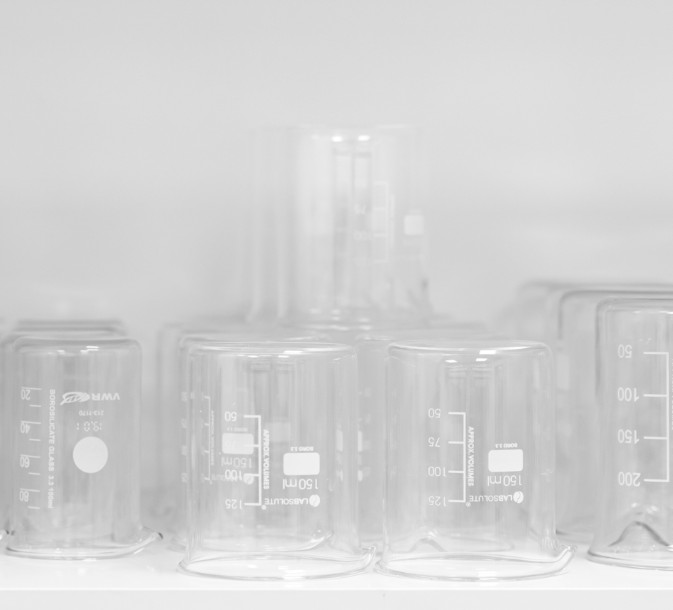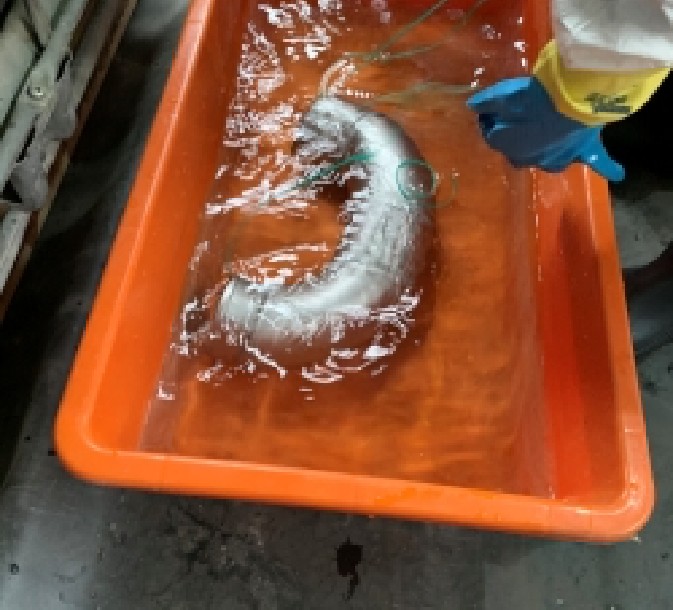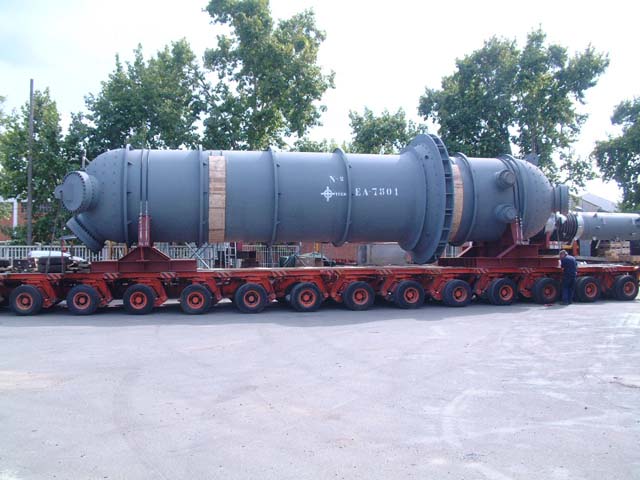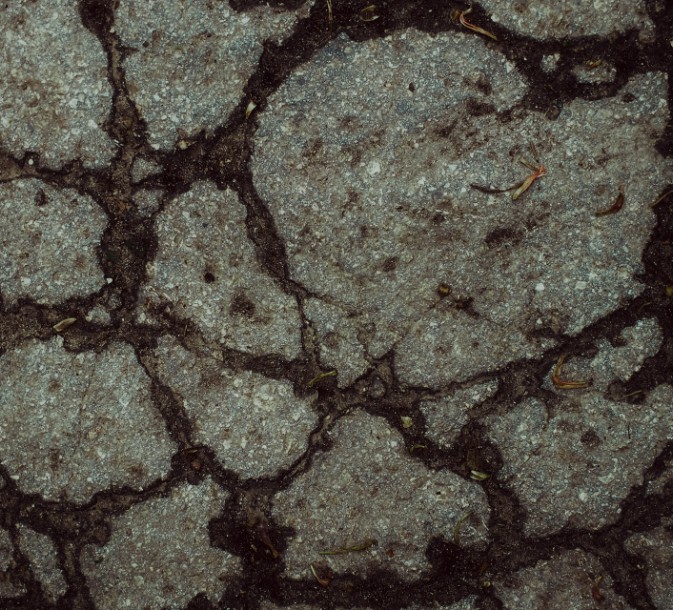Question
Activated carbon filter loaded with Calcium sulfate deposits (CaS04).
Removal of these deposits without affecting the activated carbon pellet.
Test results
In order to get a good picture of the course of the removal of the deposits, several tests were set up:
1. Activated carbon test sample in softened water;
2. Activated carbon test sample in 50% softened water-50% WVT 2102, stagnant test;
3. Activated carbon test sample in 50% softened water-50% WVT 2102, on stir plate.
The following results were achieved:
1. Test sample of activated carbon in water (see first photo) :
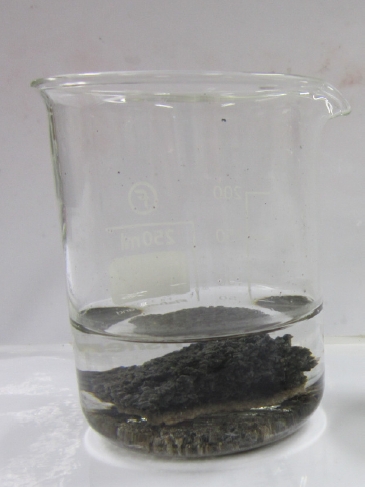
In line with our expectations, the use of softened water does not have any effect on the solubility of CaSO4, even if the temperature is increased.
2. Test sample activated carbon in 50% softened water-50% WVT 2102, stagnant test (photo 2 and 3):
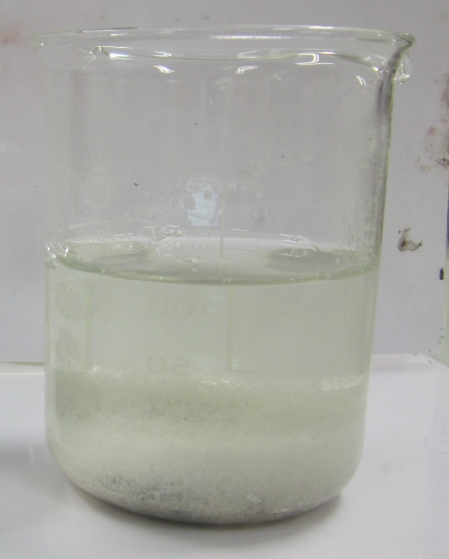
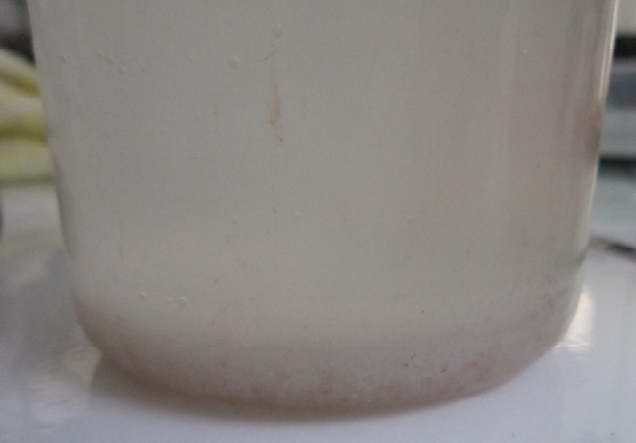
By using WVT 2102, a white haze appears in the beaker. This indicates that the product reacts with the CaSO4, slowly releasing it. After being in contact for a day, we observe the formation of a white sediment layer, which consists entirely of CaSO4. By heating the water to a temperature of 35°C, the dissolution of the CaSO4 is accelerated and white flakes appear in the solution. Due to the stagnation, the release process is rather slow.
3. Test sample of activated carbon in 50% softened water-50% WVT 2102, on stir plate:
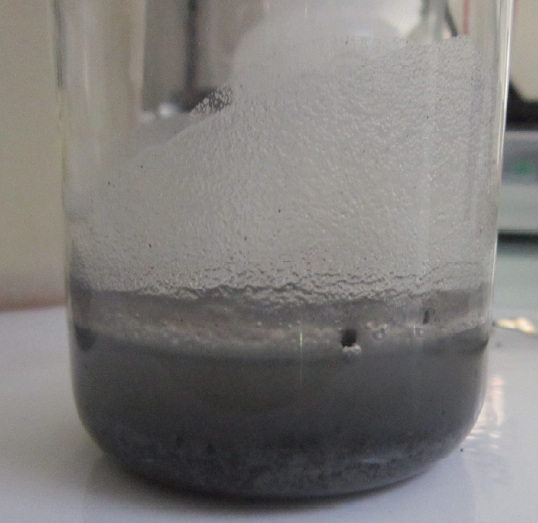
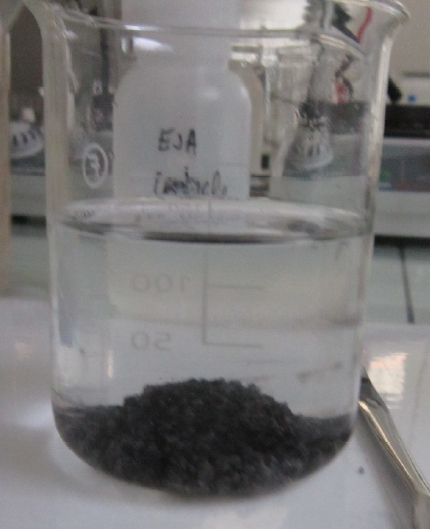
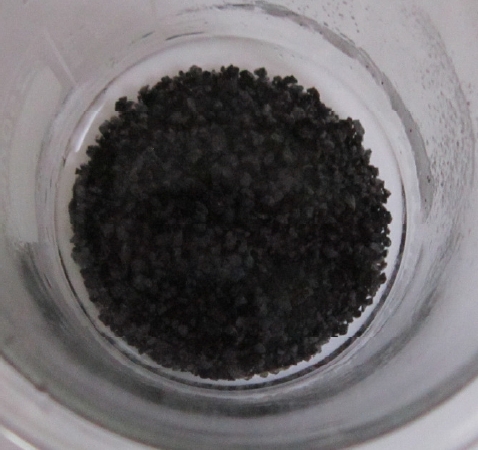
WVT 2102 was again used as the third test. The solution is placed on a stirring plate to create turbulence in the beaker.
In this case, the block of activated carbon falls apart quite quickly, and the product has the chance to loosen all the CaSO4 quickly. After approx. 2 hours, the entire block has been cleared and only granules of activated carbon remain. Again, a milky solution is created due to the release of the CaSO4 deposit. After rinsing with fresh water, the freed activated carbon filters become visible.
Conclusion
The use of WVT 2102 has a clear effect on the removal of the CaSO4 from the activated carbon filters. By combining the addition of the product with circulation, the granules disintegrate more quickly. This considerably speeds up the dissolution of the CaSO4 compared to the static test.
Practical method :
To clean the activated carbon filter in practice, the following procedure is recommended:
- Isolate the activated carbon filter by closing supply and drain cocks.
- Completely empty the filter unit.
- Fill the filter with softened water and WVT 2102. It is recommended to use a ratio of 40 - 50 % WVT 2102.
- Apply an injection of compressed air at the bottom of the filter bed in order to set the filter bed in motion.
- By leaving the upper manhole open, one can check whether there is sufficient turbulence. Initially, there will be a poor distribution of air. However, due to the action of the product, the chunks will disintegrate and a more uniform distribution of air will occur.
- When the entire surface shows an indication of the presence of air, and at least 4 hours after the addition of the product, the filter can only be rinsed out. When doing so, it is advisable to run softened water through the filter in countercurrent. As long as the rinse water remains milky white, rinsing should be continued.
- After cleaning, the active carbon filter must be reconnected and refilled.
- Re-commission the filter.
In order to avoid such deposits in the future, the use of WVT 2102 as a treatment product for the recovery water can be considered. This way, deposits of CaSO4 can be prevented.

